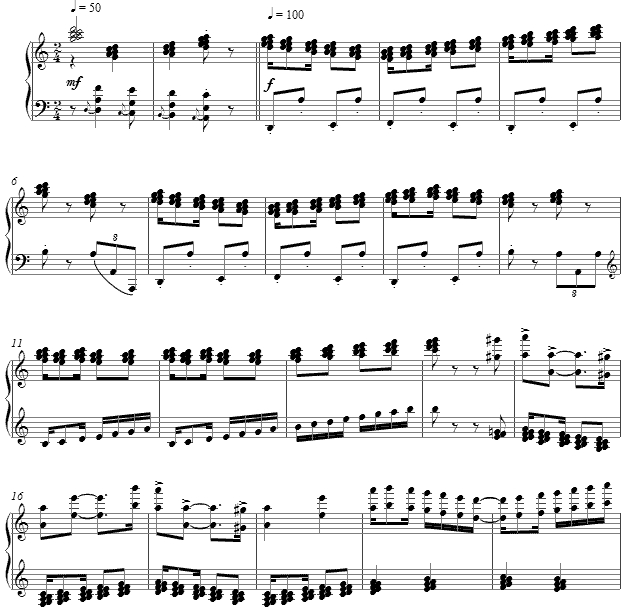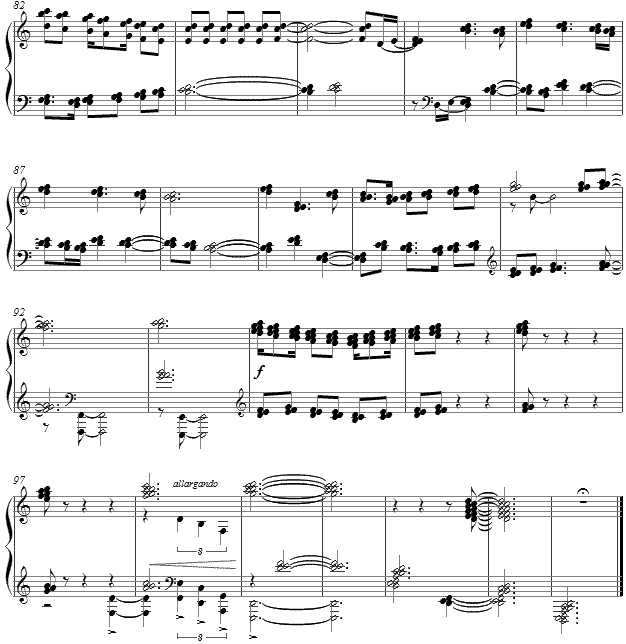Music and Texts of GARY BACHLUND
Vocal Music | Piano | Organ | Chamber Music | Orchestral | Articles and Commentary | Poems and Stories | Miscellany | FAQs
Rag and Fugue on Dorian Clusters - (2007)
for piano
The defining characteristic of the rag -- or ragtime music -- is a specific type of syncopation in which melodic accents occur between metrical beats, as one hears in the fine rags of the turn of the last century, which has a melodic theme avoid some metrical beats of the accompaniment by emphasizing notes that either anticipate or follow the beat. Rags have been notated in 2/4 and 4/4 time, and there are ragtime waltzes as well. Black American poet and author James Weldon Johnson wrote " the United States is popularly known better by ragtime than by anything else it has produced in a generation. In Paris they call it American music." The Autobiography of an Ex-Colored Man, 1912. It is from his collection of other black poets' works in 1922 that I have taken poems to set as art songs.
This rag places five-notes diatonic clusters into the right hand as the left plays out the underlying square rhythm, according to the normal rag pattern. Rooting the tonality on D yields a "white note" Dorian scale as the rag's tonality. The occasional non-harmonic tone within the Dorian scale adds spice and a sense of secondary tonal regions.
The fugue subject is spelled in three-note clusters in the Dorian mode, with the answer in a corresponding but inauthentic quasi-dominant, still rooted on the "white notes" of the keyboard. The fugue abandons the 2/4 of the rag for this three quarter time contrappunctus.
The last statements of the fugue subject layers one atop another, offset by one beat. A final recollection of the rag theme brings this short fugue to its close still firmly in the tonality of D Dorian.
The score for Rag and Fugue on Dorian Clusters is available as a free PDF download, though any major commercial performance or recording of the work is prohibited without prior arrangement with the composer. Click on the graphic below for this piano score.
Rag and Fugue on Dorian Clusters


